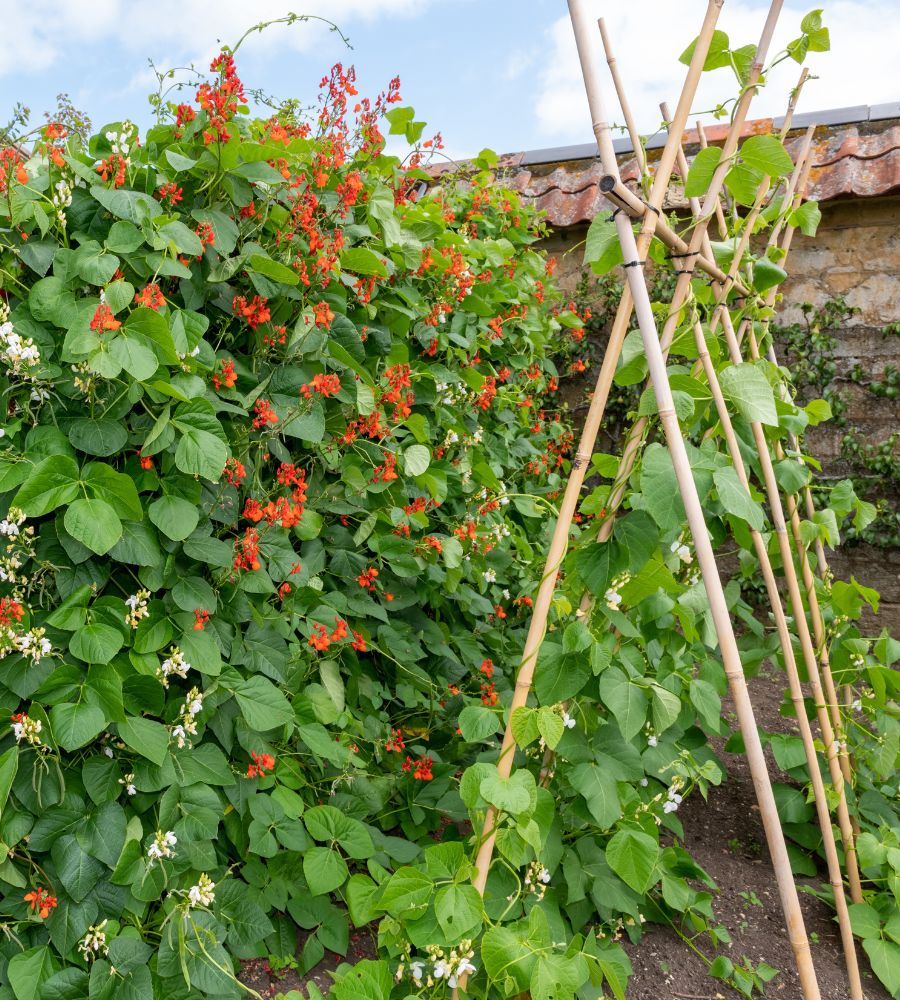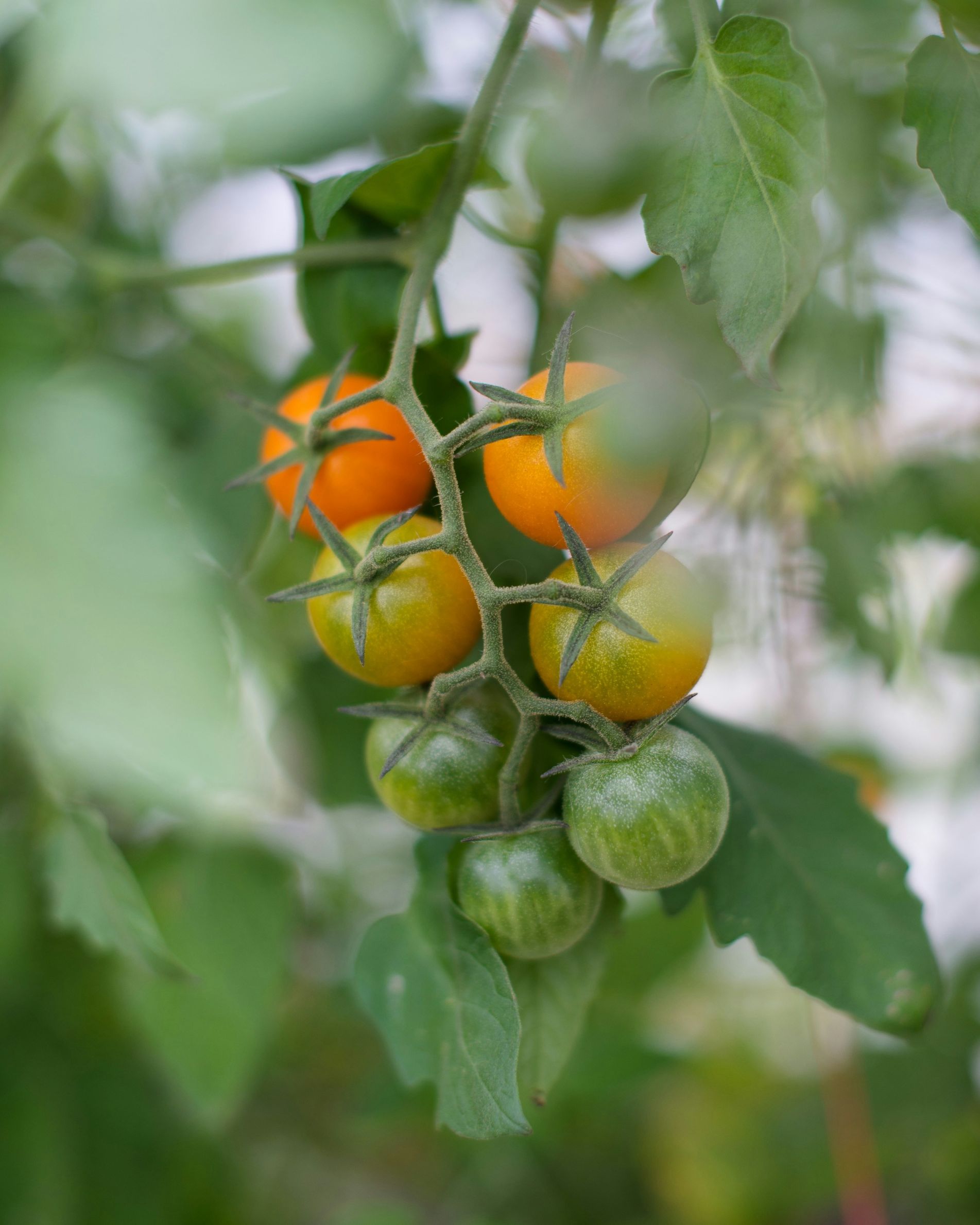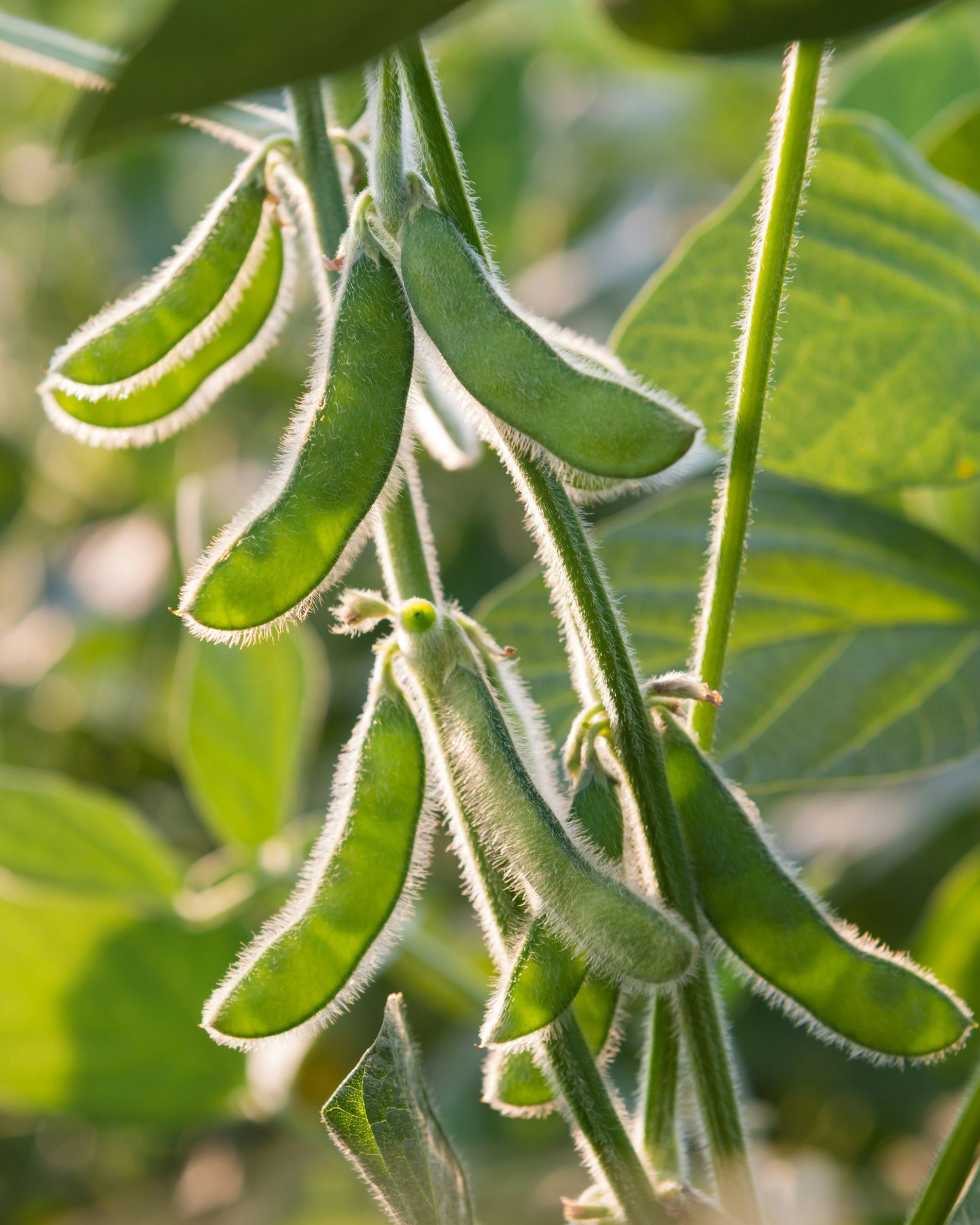
Eleanor Clarke
OUTDOOR GARDENING
How to Grow on Runner Beans
Runner beans, step by step
Number 3 on the RHS most popular veg list, runner beans are an absolute classic, a retro veg that our grandparents never went without. We grow them because they taste incredible simply steamed with sea salt and lashings of butter, but also because, as vertical growers, they’re so easy to slot into an urban garden. They’re also pretty straightforward to grow, and double up as an ornamental as they look wonderful in flower.
Runner Beans, Step by Step
A quick look at the label
There are two main kinds of runner beans: climbers such a ‘Moonlight’, an early cropping cross between a runner and French bean, ’Firelight’ (good for hot, dry summers), ‘Painted Lady’ and heavy-cropping ‘Desiree’ and dwarf varieties such as ‘Hestia’. Most are climbers. Climbers will effectively grow as tall as you let them (but again, we’ll show you how to keep them from running wild), giving you a really big crop from a small space – bonus points for city gardeners. The dwarf varieties are quicker to crop, however.
When to plant
If you’re growing runners from seed, there’s not much point starting them until mid April as they’ll grow quickly and be ready to plant out in the ground in May (or whenever you’re sure they won’t get caught by frost). If you’ve just bought baby plants, then April and May is the time to get them used to the outdoors, gradually. First a few hours, then all day, then day and night, over the course of a week or so. Do this with your seed-sown plants too, to get them used to harsher outdoor conditions.
Quick tip: Sow more runner bean seeds direct in the ground in June, for a second, later bean crop in autumn.
Where to plant
Runners beans will do best in a sunny, sheltered spot, perhaps by a south- or west-facing fence. They’re quite hungry plants, so dig in some well-rotted manure or garden compost before you plant them out, ideally a few weeks before so the manure has time to settle in.
Support them
Before you plant them, it’s a good idea to build your runner beans a really good support system, using bamboo canes or similar. One of the best ways is to make a row of bamboo canes about 2.5m tall and 20cm apart that slope inwards and are tied at the top. A horizontal cane at the top completes a strong A-frame design. When your baby runners are ready to go out, plant one at the base of each bamboo cane. If you’re using runners as ornamental plants in a flowerbed, a wigwam of canes is probably the best option, to save a little space.
Dwarf varieties will do well in pots or veg beds surrounded by twiggy sticks that will help to keep the beans off the soil.

Tie them in
Sometimes runner beans need a little help to get going up their bamboo canes. Tie the young plants in loosely with some twine if needed and they’ll soon get going.
Water
Runner beans are thirsty plants and need regular, generous watering – above all once flowering begins in summer. A thick mulch of well-rotted manure or garden compost is a good idea in late summer, to help keep the soil moist.
Pinch them out
Climbing beans will go on and on, right up to the giant’s lair high in the sky. Put a stop to it by pinching the ends out when they reach the top of your bamboo cane supports. You’ll get more beans this way too, as it diverts energy from leaf growth to flower and bean production.
The secret to plenty of beans is to pick them young and tender, with any luck by July, and they’ll keep on coming until early autumn. If you let them get big and stringy, they’re no good to eat and the plant will start putting energy into developing seeds within the pods, instead of making more delicious beans.
Pinch them out
The secret to plenty of beans is to pick them young and tender, with any luck by July, and they’ll keep on coming until early autumn. If you let them get big and stringy, they’re no good to eat and the plant will start putting energy into developing seeds within the pods, instead of making more delicious beans.
Common Problems:
1. Where have my baby plants gone?
Slugs and snails are probably the culprits. See them off with beer traps set into the soil when you plant youngsters out
2. Blackfly!
It’s a common problem around the tips of runner beans, as flower buds are forming. If you spot it quickly, you can spray it off with the jet of a hose, and keep an eye on it.
3. No bean pods
This can sometimes happen, and it’s usually due to lack of water. Mulching in summer and keeping on top of your watering will obviously help.
Remember, if we don’t have specific plants in stock, just come and ask one of the team. We’ll be happy to suggest an alternative or order it for you, if we can.


